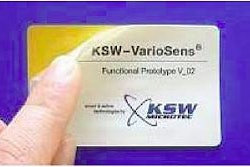
Research analyst Priyanka Gouthaman of research firm Frost & Sullivan led a Webinar in January entitled Unraveling the Promise of RFID within Healthcare and Pharmaceutical Markets. After the formal presentation, which we published last month as Unraveling RFID for pharma, Ms. Gouthaman deftly fielded questions from the audience. We present the following highlights of her responses:
Are there any mandates, especially in pharmaceutical drug tracking, similar to what Wal-Mart has done in retail?
Gouthaman: There are no mandates as such. In the retail sector, there are mandates by Wal-Mart, Tesco, and Metro, for example. In the pharma space, it is a case of regulatory compliance. One of the biggest market influences is the U.S. Food & Drug Administration, which has come out in support of RFID technology as a means of [creating an] electronic pedigree. These recommendations include compliance of RFID tagging requirements at the item level by 2007. It would have a huge impact if the FDA required compliance as soon as 2007. [Editor's note: For an update on this issue, see FDA unhappy with RFID progress].
Some companies are awaiting proof that RFID can work. What will it take for RFID to break through this hesitancy?
Gouthaman: On the one hand, the potential of RFID is there, but there's also apprehension among end users. One of the biggest reasons for that is the cost of the hardware, which hinders those considering wider investment in RFID. As tag costs have come down progressively over the past couple of years, some pharma companies have adopted a tiered approach to RFID tagging, [focusing on] product lines that have high margins and are able to absorb the cost of the initial investment.
Also, because the technology is still evolving and has not yet reached plug-and-play [simplicity], apprehension exists. Healthcare and pharma companies are adopting a "wait and watch" approach of the success of RFID projects in other markets such as in retail. The success of projects where there are huge investments will probably decide the future of the technology in healthcare and pharma applications, and possibly help in overcoming apprehension and hesitancy. Still, we are seeing considerable investment and pilots, and RFID will see considerable deployment after 2007 when FDA deadlines are met by majority of pharma companies.
What level of interest is there in sensor-enabled RFID?
Gouthaman: Temperature-controlled storage and distribution is definitely an increasing trend that is being required by a number of a pharma products, especially in vaccines, diabetic drugs and other temperature-sensitive materials.
Large manufacturers use high-cost, battery-powered data loggers that track containers for temperature. When compared to the [relatively lower cost of] RFID investment, RFID tends to gain in this segment. We expect the impact of this driver to be high over the next 12 to 18 months due to patient legislation, primarily in European markets. [Another factor is that] cold-chain compliance requires documents that include verification of storage conditions for temperature-sensitive pharma products; that is definitely increasing the interest and growth in sensor-enabled RFID technology.
Future product offerings from RFID vendors will also definitely include sensors or temperature-monitoring technology.
What are ramifications of the announcement about Pfizer RFID-enabling all of its Viagra to be sold in United States?
Gouthaman: It's definitely one of the larger pilots. Ideally, what this means is that the success of an early adopter will instill a higher level of confidence among smaller manufacturers that are still skeptical about RFID investments and technology and what it can do for them. Pilots by large companies have a spillover effect across the market and induce a wider rate of adoption. [Editor's note: For more on RFID-enabled Viagra, see Item-level ePedigree implementation].
What about pharma RFID in China?
Gouthaman: China accounts for a large amount of counterfeit drugs, especially with brands such as Viagra. The estimated loss of life due to counterfeit drugs in this region is high. A key factor is that China's intellectual property protection legislation allows for Chinese drug companies to get details of product specifications when foreign pharma firms apply for administrative protection or approval. The loopholes in such legislation are opening avenues for counterfeiting. The benefits of RFID would be phenomenal in such markets.
About the expert
Frost & Sullivan research analyst Priyanka Gouthaman is recognized as an expert in the Automatic Identification (Auto-ID) industry. Her primary expertise is in RFID, with other areas that include Healthcare Systems and Applications, Pharmaceutical Markets, Retail Markets, and Supply Chain Strategies.
























